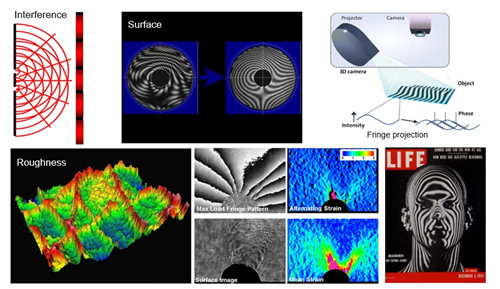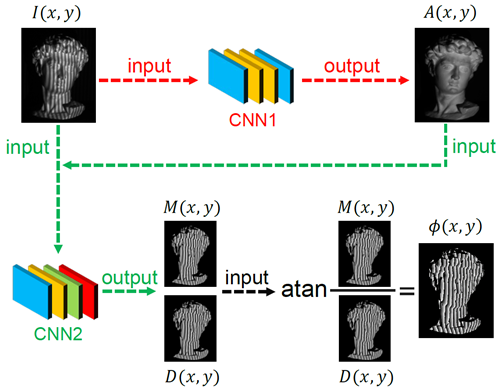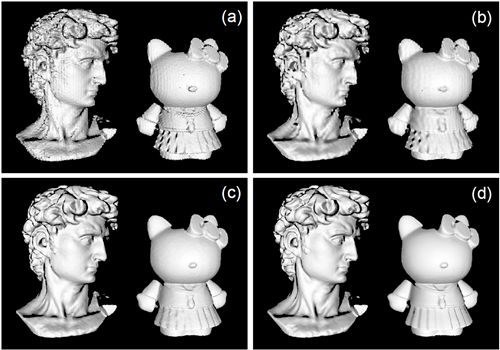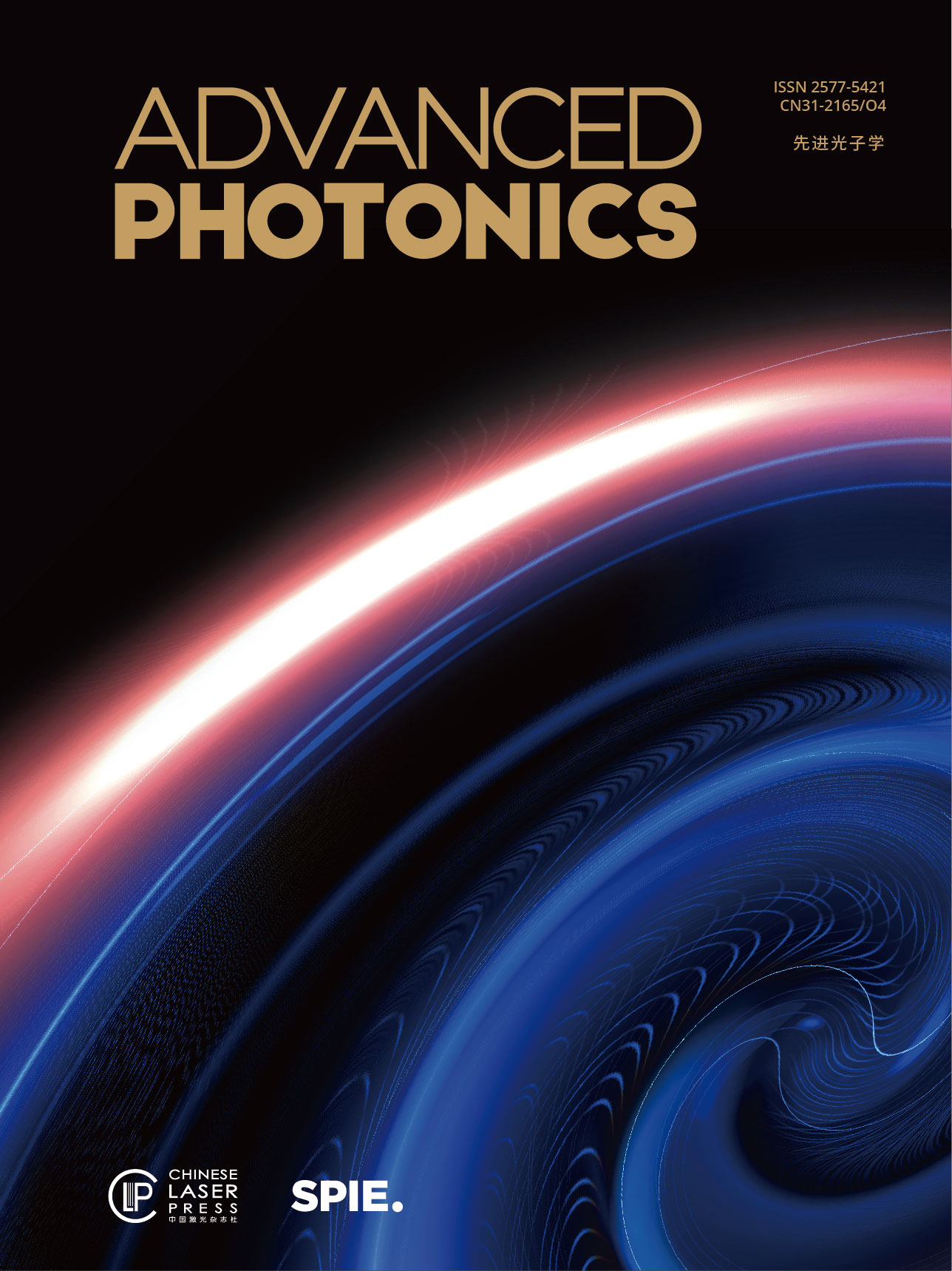Optical phase measurement plays a significant role in computer-aided non-contact optical metrology in recent decades. It has been widely used in many scientific and engineering applications such as industrial detection, machine vision, biomedicine, nanostructure characterization and so on. Representative phase measurement techniques include optical interferometry, digital holography, electronic speckle interferometry, Moire profilometry, and fringe projection profilometry. One of their common features is that the captured periodic fringes are formed by means of interference or projection, so that the physical quantities to be measured (such as the surface shape, displacement, strain, roughness, defects, etc.) are directly or indirectly reflected in the phase information of the fringes (Figure 1). Therefore, these techniques need to analyze the fringe pattern for the phase extraction, and then convert the phase distribution into the physical quantity of interest. Basically, the measurement accuracy of these optical techniques depends directly on the phase demodulation accuracy of recorded fringe patterns. Therefore, the fringe pattern analysis is the most important yet the most difficult step in optical phase measurements.

Figure 1. Applications of fringe analysis (images from the internet).
In the early stage, the fringe pattern is usually recorded by a film and analyzed through visual inspection to identify the shapes, positions, peaks, valleys, and the fringe order in order to infer the phase distribution of the measured object. However, the accuracy and efficiency of this method arequite low, since only 1/10~1/20 wavelength (λ) precision can be achieved and only partial phase information of the whole measured object can be obtained. Since the 1960s, the rapid development of optoelectronics, computer, and laser technologies has established a solid technical foundation for the real-time optoelectronic measurement of phase distribution. The invention of the charge coupled device (CCD) makes the fringe recording process digitalized. The development and popularization of personal computers make the fringe analysis evolve from naked eye detection to automatic demodulation through computer programs. This greatly improves the accuracy, speed, and automation of the phase measurement approaches and brings about various novel fringe analysis techniques, thus promoting a leap in optical metrology. Even now, how to extract the phase information of fringe patterns with the highest accuracy, fastest speed, and full automation is still a research hotspot and focus in the field of optical metrology.
In the past few decades, researchers and engineers have devoted themselves to developing various fringe analysis techniques, which can be roughly classified into two categories: (1) Time-domain phase-shifting methods [1]: extract the phase information using multiple phase-shifted fringe patterns; (2) Space-domain phase demodulation methods: estimate the phase distribution through a single high-frequency fringe pattern, such as Fourier transform method [2], windowed Fourier transform method [3], and wavelet transform method [4]. The phase-shifting methods can achieve high-resolution pixel-wise phase measurement, thus having higher accuracy than the space-domain phase demodulation methods. However, such approaches are vulnerable to disturbances such as object motion/environmental vibration, thus making them difficult to be applied to high-speed measurements. In contrast, spatial phase demodulation methods have higher robustness to vibration/motion, because they can demodulate the phase from a snapshot. But they are sensitive to the large depth changes, fringe discontinuities, and rich details of testing surfaces, preventing them from high-precision and high-resolution phase measurement of complex surfaces. In addition, spatial approaches usually have many parameters to adjust in order to achieve better results, making them difficult to be fully automatic in practical applications.
When Alpha Go defeated the world champion Lee Sedol in 2016 [5], artificial intelligence (AI) technologies represented by deep learning, came into the public's view. The discussion on AI technology became more heated. It was believed that AI would probably bring about a technological revolution and profoundly change our lives in the next 10 years. As predicted at that time, AI has already made great breakthroughs in many fields such as computer vision, image and speech processing. Also, it is worth noting that the deep learning technique has gradually penetrated into and demonstrated great potential for optical imaging, computational imaging, holographic microscopy, and other fields. Recently, for the first time, researchers at Nanjing University of Science and Technology (NJUST) prove that the fringe analysis can be carried out with high-accuracy and high-efficiency through deep learning. The idea is to train deep neural networks to mimic the temporal phase-shifting algorithm for phase measurement but using only a single fringe pattern. As shown in Figure 2, two convolutional networks (CNN1 and CNN2) are developed and are used together to determine the phase distribution. With a fringe image as input (I), CNN1 can estimate a background image (A) that does not involve any stripes. Then, CNN2 exploits both the background image and the raw fringe image to calculate two parts: sinusoidal (M) and cosine (D) parts. These two parts are then fed into the arctangent function for the final phase calculation. In the training stage, the deep neural networks learn to extract phase-related information with large amounts of ground truth data obtained by standard 12-step phase-shifting algorithm. After appropriate training, they can output high-accuracy phase map using a single fringe image for objects that are not present in the training data.

Figure 2. Flowchart of the fringe analysis using deep neural networks.
In their experiments, researchers at NJUST measured the phase and the 3D shape of different samples. Experimental results show that compared with Fourier transform method and windowed Fourier transform method, the depth-learning-based fringe analysis can demodulate the phase distribution with significantly higher accuracy (with a reduction of more than 50% phase error). Besides, it preserves the details of object boundary and contour with higher fidelity, producing 3D reconstructions that almost reproduce the results of the 12-step phase-shifting method (Figure 3). Further, unlike the Fourier transform method and windowed Fourier transform method where the performance heavily relies on fine-tuning of several parameters, this approach is fully automatic and does not require a manual parameter search to optimize its performance once the neural network has been trained. With a single fringe pattern, an accurate phase map can be obtained within a second through the deep neural networks. Hence, this novel fringe analysis technique realizes the goal of high accuracy, high efficiency, and full automation for optical phase measurements simultaneously. Currently, the researchers are trying to apply this technique to high-speed and high-resolution 3D surface imaging of transient events. The fringe analysis using deep learning is expected to be widely used in various optical phase measurement applications in the future.

Figure 3. Comparison of 3D reconstruction results of different approaches: (a) Fourier analysis, (b) windowed Fourier analysis, (c) deep-learning-based fringe analysis, (d) 12-step phase-shifting method.
Read More
Reference
[1] C. Zuo et al., “Phase shifting algorithms for fringe projection profilometry: a review,” Opt. Lasers Eng. 109, 23–59 (2018).
[2] X. Su and Q. Zhang, “Dynamic 3-D shape measurement method: a review,” Opt. Lasers Eng. 48(2), 191–204 (2010).
[3] Q. Kemao, “Two-dimensional windowed Fourier transform for fringe pattern analysis: principles, applications and implementations,”Opt. Lasers Eng. 45(2), 304–317 (2007).
[4] J. Zhong and J. Weng, “Spatial carrier-fringe pattern analysis by means of wavelet transform: wavelet transform profilometry,” Appl. Opt. 43(26), 4993–4998 (2004).
[5] Borowiec S. “AlphaGo seals 4-1 victory over Go grandmaster Lee Sedol”. The Guardian, 15, (2016).


